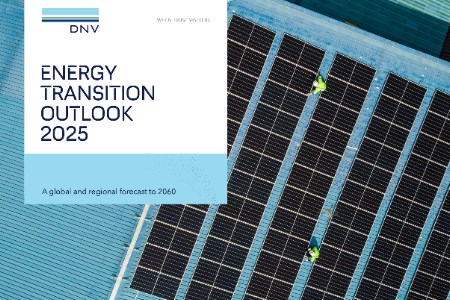DNV: Policy reversals in the US will have marginal impact on global energy transition
Published by Elizabeth Corner,
Senior Editor
Oilfield Technology,
The global shift towards cleaner energy remains robust even though the pace of the energy transition in the United States has slowed sharply due to recent policy reversals. According to the ninth edition of DNV’s Energy Transition Outlook, the US slowdown will have only a marginal effect on worldwide progress, as momentum continues to build elsewhere – most notably in China.

In the US, policy reversals and renewed support for fossil fuels are expected to delay emission reductions by about five years, with annual carbon dioxide emissions projected to be 500 - 1000 million t higher than previously forecast. Meanwhile, China is setting new records for renewable energy deployment, accounting for 56% of global solar PV installations and 60% of new wind power additions this year alone. Its clean technology exports also continue to drive the energy transition worldwide.
DNV forecasts a slightly slower transition with the energy mix to be split 51% - 49% between fossil and non-fossil fuels in 2050. Likewise, 2050 global carbon dioxide emissions are now forecast to be 4% higher compared to last year’s Outlook.
“It is more important than ever to evaluate the energy transition from a global perspective. The global energy transition is not stalling – it is evolving, with momentum shifting to regions that are doubling down on clean technologies,” said Remi Eriksen, Group President and CEO of DNV. “Security has become the dominant driver of energy policy, and as our forecast shows, this is in sum accelerating the shift to renewables.”
The Energy Transition Outlook finds that the net effect of energy security is decreasing emissions. Global emissions are forecast to be 1 - 2% lower per year due to the implementation of energy security policy. Nuclear power, for example, will account for 9% of electricity supply in 2060. Without energy security policies, nuclear power would have been one third lower. In Europe, emissions are forecast to be 9% lower in 2050 due to energy security as it pivots away from imported fossil fuels.
Other key findings from this year’s report include:
- AI is emerging as a significant energy consumer, but it will only consume 3% of global electricity in 2040. Data centre energy use will quintuple to 2040, equalling 5% of all global electricity; 3% of this is for AI and 2% for general purpose data centres. There are large regional variations; in North America (the US and Canada) the 2040 share is 16% of all electricity, with 12% being AI.
- Global carbon dioxide emissions will reduce by 43% from today to 2050 – and is expected to reach net zero after 2090. The carbon budget for 1.5°C is exhausted in 2029 and the budget for 2°C in 2052. Limiting global warming to 1.5°C without a temporary overshoot is no longer possible.
- Electricity is growing and greening at a high pace. Global electricity generation is projected to increase by 120% from now until 2060, doubling from a 21% share of total energy demand today to 43% in 2060. During 2025 we have passed the milestone of 50 million BEVs. Global solar PV capacity is projected to reach over 3000GW this year, with China having installed more than twice as much capacity as Europe, the next largest installer.
- The plunging costs of solar panels and batteries have made behind-the-meter (BTM) solutions attractive for a range of households and business. BTM will represent 30% of all solar and 13% of all power generated by 2060.
“In several sectors, technology progress and cost reduction are driving the energy transition forward, but in harder to decarbonize sectors, much more policy help is needed. While geopolitical tensions and national priorities add complexity, the global direction of the energy transition remains clear,” added Eriksen.
Read the article online at: https://www.oilfieldtechnology.com/special-reports/08102025/dnv-policy-reversals-in-the-us-will-have-marginal-impact-on-global-energy-transition/
You might also like
Eni acquires from YPF shares in the exploration Block OFF-5 offshore Uruguay
The agreement will become effective after the approval of the Uruguayan authorities.

